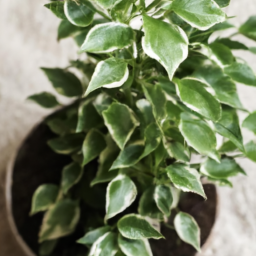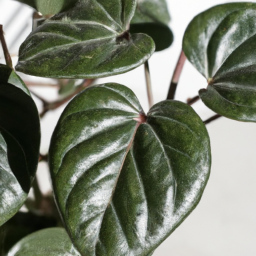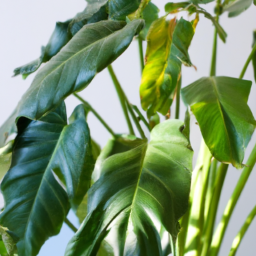
Are you looking for indoor plants that can thrive in low-light conditions? If so, you’ve come to the right place! Many people think that plants need lots of sunlight to survive, but there are actually several varieties that can thrive indoors with little to no natural light. In this blog post, we will explore some of the best indoor plants that require minimal light, perfect for those dark corners of your home or office. So, if you want to bring some greenery into your space without worrying about sunlight, keep reading to discover some beautiful options for indoor plants no light.
Benefits of Low Light Indoor Plants
Introduction
Indoor plants are a great way to bring nature into your home or office. They not only add beauty and color to your space but also have numerous health benefits. However, not all indoor plants thrive in low light conditions. In this article, we will explore the benefits of low light indoor plants and how to care for them.
Improved Air Quality
One of the main benefits of having indoor plants is their ability to improve air quality. Low light indoor plants can help remove toxins from the air, such as formaldehyde and benzene, and release oxygen into the environment. This can help reduce the risk of respiratory problems and improve overall well-being.
Some popular low light indoor plants that are known for their air-purifying properties include the snake plant, peace lily, and spider plant. These plants are low maintenance and can thrive in areas with minimal natural light.
To maximize the air-purifying benefits of low light indoor plants, make sure to regularly dust the leaves and keep the soil moist but not waterlogged. You can also place a small fan near the plants to improve air circulation.
Stress Reduction
Indoor plants have been shown to have a calming effect on people and can help reduce stress levels. The presence of greenery indoors can create a sense of tranquility and promote relaxation. Low light indoor plants, in particular, can thrive in spaces with limited sunlight, making them a great choice for offices or bedrooms.
Studies have shown that simply being around plants can lower blood pressure and reduce feelings of anxiety. By incorporating low light indoor plants into your environment, you can create a peaceful oasis that promotes mental well-being.
To maximize the stress-reducing benefits of low light indoor plants, consider placing them in areas where you spend the most time, such as your workspace or living room. Take the time to care for your plants and enjoy the therapeutic benefits of nurturing living things.
Enhanced Productivity
In addition to improving air quality and reducing stress, low light indoor plants can also enhance productivity. Research has shown that having plants in the workplace can increase focus and concentration, leading to better performance on tasks.
Plants have a natural ability to boost creativity and problem-solving skills, making them a valuable addition to any workspace. Low light indoor plants are a great option for offices with limited natural light, as they can thrive in artificial lighting conditions.
To maximize the productivity-boosting benefits of low light indoor plants, consider placing them near your desk or in areas where you need to concentrate the most. Take breaks to water and care for your plants, allowing yourself to recharge and refocus.

Introduction
Are you looking to bring some greenery into your home but don’t have a lot of natural light? Don’t worry, there are plenty of indoor plants that can thrive in low light environments. In this guide, we will explore the best indoor plants for low light conditions, so you can add some life to your space without the need for direct sunlight.
Snake Plant
The snake plant, also known as mother-in-law’s tongue, is a popular choice for low light environments. This hardy plant can survive in a variety of conditions, making it perfect for beginners or those with less than ideal lighting. The snake plant has long, sword-shaped leaves that can add a touch of elegance to any room.
One of the key benefits of the snake plant is its ability to purify the air. It is known for removing toxins such as formaldehyde and benzene, making it a great choice for improving indoor air quality. Additionally, the snake plant is low maintenance and only requires occasional watering, making it a hassle-free option for those with busy schedules.
To care for your snake plant, place it in indirect sunlight and water sparingly, allowing the soil to dry out between waterings. With proper care, your snake plant can thrive in low light conditions and bring a touch of green to your home.
Pothos
Pothos, also known as devil’s ivy, is another popular choice for low light environments. This versatile plant features heart-shaped leaves that can range in color from green to variegated shades of white and yellow. Pothos is a great option for hanging baskets or trailing down shelves, adding a touch of nature to any space.
One of the key benefits of pothos is its ability to thrive in low light conditions. This plant can adapt to a variety of lighting situations, making it a great choice for rooms with limited natural light. Pothos is also known for its air-purifying properties, making it a healthy addition to your home.
To care for your pothos plant, place it in indirect sunlight and water when the top inch of soil feels dry. Pothos is a forgiving plant that can withstand occasional neglect, making it a great option for beginners or those with busy schedules. With proper care, your pothos plant can thrive in low light environments and bring a pop of color to your home.
ZZ Plant
The ZZ plant, also known as Zamioculcas zamiifolia, is a low maintenance plant that thrives in low light conditions. This plant features glossy, dark green leaves that can add a touch of modern elegance to any room. The ZZ plant is known for its ability to tolerate neglect and is a great option for those looking for a low maintenance plant.
One of the key benefits of the ZZ plant is its ability to thrive in low light environments. This plant can survive in a variety of lighting conditions, making it a versatile option for any room in your home. The ZZ plant is also known for its air-purifying properties, making it a healthy choice for indoor spaces.
To care for your ZZ plant, place it in indirect sunlight and water sparingly, allowing the soil to dry out between waterings. The ZZ plant is drought tolerant and can withstand periods of neglect, making it a great option for those with busy schedules. With proper care, your ZZ plant can thrive in low light environments and bring a touch of nature to your home.

Tips for Caring for Indoor Plants in Low Light Conditions
Understanding the Importance of Light for Indoor Plants
When it comes to caring for indoor plants, light is one of the most important factors to consider. Light is essential for photosynthesis, the process by which plants convert light energy into chemical energy to fuel their growth. Without adequate light, plants will struggle to thrive and may even die.
In low light conditions, plants will typically exhibit slower growth, smaller leaves, and may become leggy as they stretch towards the light source. It’s important to choose plants that are well-suited to low light conditions and to provide them with the best care possible to help them thrive.
To determine if your indoor space has low light conditions, observe the amount of natural light that filters into the room throughout the day. If the room receives minimal direct sunlight or is shaded by buildings or trees, it likely has low light conditions. Additionally, you can use a light meter to measure the intensity of light in the room and determine if it is suitable for low light plants.
Choosing the Right Plants for Low Light Conditions
When selecting indoor plants for low light conditions, it’s important to choose varieties that are well-adapted to thrive in these environments. Some plants are naturally more tolerant of low light and can survive with minimal sunlight.
Some popular low light indoor plants include pothos, snake plants, peace lilies, and ZZ plants. These plants are known for their ability to thrive in low light conditions and require minimal maintenance. When choosing plants for your space, consider the specific lighting conditions in the room and select plants that are well-suited to thrive in those conditions.
In addition to choosing the right plants, it’s important to provide them with the proper care to help them thrive in low light conditions. This includes ensuring they receive adequate water, proper humidity levels, and regular fertilization. By providing your plants with the care they need, you can help them thrive in low light conditions and enjoy their beauty in your indoor space.
Caring for Indoor Plants in Low Light Conditions
When caring for indoor plants in low light conditions, there are several key factors to keep in mind to help them thrive. First and foremost, it’s important to water your plants appropriately, as overwatering or underwatering can be detrimental to their health.
In low light conditions, plants may require less frequent watering than those in brighter light, as they will not be using as much water for photosynthesis. It’s important to check the soil moisture levels regularly and adjust your watering schedule accordingly to ensure your plants receive the proper amount of water.
In addition to watering, it’s important to provide your plants with the proper humidity levels to help them thrive in low light conditions. Low humidity levels can be detrimental to indoor plants, causing their leaves to dry out and become crispy. To increase humidity levels, you can mist your plants regularly or place a humidifier near them to help maintain optimal humidity levels.
Finally, it’s important to fertilize your plants regularly to provide them with the nutrients they need to thrive in low light conditions. Choose a balanced fertilizer specifically formulated for indoor plants and follow the instructions for application carefully to avoid overfertilizing. By providing your plants with the proper care and attention, you can help them thrive in low light conditions and enjoy their beauty in your indoor space.
In a Nutshell
If you’re looking to add some greenery to your home but don’t have a lot of natural light, don’t worry – there are still plenty of indoor plants that can thrive in low-light conditions. Plants like snake plants, pothos, and peace lilies are great options for spaces with limited sunlight. These plants are not only easy to care for, but they can also help purify the air in your home.
When choosing indoor plants for low-light environments, it’s important to consider the specific conditions of your space. While some plants can survive with minimal light, others may require a bit more brightness to thrive. Additionally, be sure to water your plants appropriately and avoid overwatering, as this can be detrimental to their health. With the right care and attention, you can enjoy the beauty and benefits of indoor plants even in spaces with little to no natural light.
Frequently Asked Questions (FAQ):
Q1. Can indoor plants survive without any natural light?
A1. Yes, there are several indoor plants that can thrive in low light conditions and even in rooms with no natural light. These plants are typically known as low-light or low-maintenance plants.
Q2. What are some indoor plants that can survive in low light conditions?
A2. Some examples of indoor plants that can thrive in low light include snake plants, pothos, peace lilies, spider plants, and ZZ plants. These plants are well-suited for environments with minimal natural light.
Q3. How can I care for indoor plants that require no light?
A3. To care for indoor plants that require no light, it’s important to water them appropriately, ensure proper drainage, and occasionally dust their leaves to allow for proper photosynthesis. Additionally, rotating the plants occasionally can help promote even growth.
Q4. Are there any benefits to having indoor plants in low light conditions?
A4. Yes, indoor plants can provide numerous benefits even in low light conditions. They can help improve air quality, reduce stress, boost mood, and add a touch of nature to indoor spaces. Additionally, caring for plants can be a rewarding hobby.
Q5. Can artificial light be used to supplement natural light for indoor plants?
A5. Yes, artificial light can be used to supplement natural light for indoor plants that require more light than what is available in their environment. LED grow lights or fluorescent lights can be effective in providing the necessary light spectrum for plant growth.
Dr. Olivia Green is a botanist with over two decades of experience in indoor plant cultivation. She holds a Ph.D. in Plant Biology and has dedicated her career to researching plant behavior in controlled environments. Dr. Green is passionate about helping plant enthusiasts master the art of indoor gardening through her extensive knowledge and practical insights.


